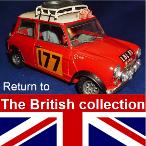Tony Brookes is one of the least remembered F1 stars but one who Stirling Moss rated at the very top. How could a grand prix winner and history maker be so underrated.
It is 1955 and no British driver has won a European GP in a British car since Segrave’s 1924 win at San Sebastian driving a Sunbeam. BRM are in disarray, Vanwall are only just in the earliest of beginnings and the Germans are carrying all before them with the Mercedes RW 196. Absolutely intolerable... Tony Vandervell is doing is best to beat “those bloody red cars” and the whole country is chipping in parts and money to back Raymond Mays, but a British win seems as far away as ever.
In the lower formulas racing in Britain is really taking off with all sorts of small concerns competing in 500cc racing and slowly breaking through to Formula two and on the very fringe of F1. Cooper, Kieft, Bristol, Alta and HWM to mention but a few. One of these Garagistas, as they were mockingly thought of in Europe, was Connaught.
Continental Cars Ltd were a garage in Send, Surrey, specialising in sales, service and repairs of European sports cars. They started building racing cars in 1949 and used the name Connaught as a pun on Continental Autos! The cars were designed by Rodney Clarke, an outstanding designer who paid particular attention to detail, a fact that some times slowed down the development of the cars. Also holding him back was the same lack of funding that affected all the British manufacturers, Connaught however still managed to turn out exceptionally well built cars. Clarke had some very advanced ideas too, he designed a rear engine sports car in 1950, conceived a rear engine F1 car by 1955 and had ideas for anti-lock braking and self levelling suspension, and Connaught were the first F1 team to have their own wind tunnel!
The main problem for the British concerns was the lack of competitive engines, Norton and JAP were great in 500cc racing but no one was building the big stuff needed for F1. Connaught had cars that were great in the areas of handling, braking and cornering but really needed a good engine. The best the team could run was a 2,5 Ltr unit based on Lea Francis engines. As it turned out that was going to be enough!
Like something out of boys own the Connaught team travelled down to Syracuse to race against the best Italy had to offer. The drivers familiarised themselves with the circuit by renting scooters to run around the local roads of which it would comprise. They missed Friday practice but set times on Saturday good enough for 3rd position on the front row of the grid. Nobody really took the green cars seriously. A mistake that was going to cost them. Brookes drove superbly and set a fastest race lap of 2:00,2 compared to his qualifying time of 2:05. He simply outdrove the competition and finished 50’5 sec’s ahead of second place Musso driving a works Maserati 250F. The quite dental student was the first British winner, in a British car, of the modern F1 era.
By 1958 all the funds had dried up for Connaught and Rodney Clarke returned to the simpler world of running the garage business in Send.

Scratch built model 1/24th scale model.
Built by Ian.

This model was built in the mid 1990s in the era just before photo-etched sets became popular so this model is mostly detailed using fuse wire and household items.
Cast in resin, from my own moulds of the Merit kit, the model has many scratch built parts detailing it. In the cockpit a chassis was assembled and fuel tanks replicated. The suspension was detailed all around and any little additions that could be made were included.
The body was painted with Halfords acrylic car paints and a mixture of Humbrol enamel and Citadel acrylic colours were used for the detail painting. Ink washes have been used to pick out panel lines and add shading in some areas.
RETURN TO -
